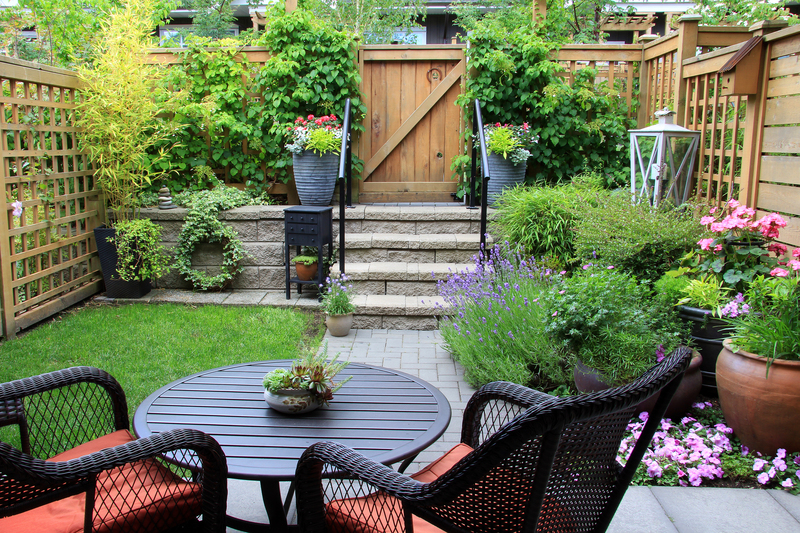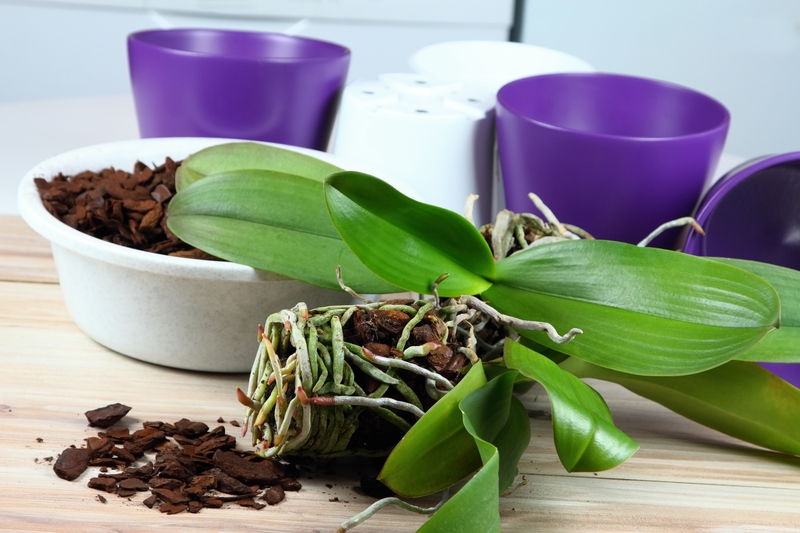Keep Weeds at Bay: 3 Must-Know Tips for Gardeners
Posted on 14/09/2025
Keep Weeds at Bay: 3 Must-Know Tips for Gardeners
If you're passionate about gardening, you know how unwelcome weeds can be. Weeds rob your beloved plants of valuable nutrients, water, and sunlight, often outcompeting them and spoiling the beauty and productivity of your garden beds. Whether you're a seasoned green thumb or just starting out, learning how to keep weeds at bay is crucial for a thriving landscape. In this comprehensive guide, discover three essential tips every gardener needs to maintain a healthy, weed-free garden. From manual methods to strategic planning, these approaches will empower you to suppress weeds before they become a headache.
Why Gardens Need Effective Weed Control
Understanding why weed management is essential can help motivate you to stay diligent. Weeds are aggressive plants that compete with flowers, vegetables, and shrubs for the same resources. If left unchecked, they:
- Reduce garden yield: Siphoning off nutrients and moisture, they stunt the growth of your preferred plants.
- Invite pests and diseases: Some weeds harbor insects or pathogens that can spread and damage your plants.
- Disrupt garden aesthetics: They create a messy appearance, undermining the carefully designed look of your garden.

1. Mulching: Your First Line of Defense Against Weeds
Mulching stands out as one of the most effective and eco-friendly tools for any gardener intent on controlling weeds. A well-applied layer of mulch deprives sprouts of sunlight, inhibiting their growth and making it difficult for weeds to gain a foothold.
Choosing the Best Mulch for Weed Prevention
- Organic Mulches: Materials like shredded bark, straw, grass clippings, and compost not only suppress weeds but also enrich the soil as they decompose.
- Inorganic Mulches: Gravel, stone chips, and landscape fabrics are durable options for pathways or areas where you don't want anything growing. However, these don't improve soil quality.
Tips for Effective Mulching
- Apply mulch two to three inches deep. Too thin, and weeds can penetrate; too thick, and you might suffocate plant roots.
- Keep mulch away from plant stems or trunks, as direct contact can foster rot or attract pests.
- Replenish mulch annually, especially organic types, as they break down with time.
- Weed before you mulch. You'll trap existing weeds if you mulch over them.
Mulching is a proactive approach--when done right, it immensely keeps weeds at bay and promotes soil health, conserving moisture and moderating soil temperatures year-round.
2. Hand Weeding and Hoeing: The Classic, Time-Tested Strategy
When it comes to weeding in the garden, nothing beats classic hand-pulling and hoeing, especially for small to medium beds or where other methods fall short. This direct approach is eco-friendly, chemical-free, and remarkably effective when performed consistently.
How to Pull Weeds Effectively
- Pull weeds early and often. Young weeds are easier to remove and less likely to have set seed.
- Grip at the base. Get as close to the soil as possible to pull out the entire root system.
- Pull after rainfall or watering. Moist soil makes it easier to extract the roots intact.
- Use a hand trowel or weeding fork for tenacious or deep-rooted weeds such as dandelions or thistles.
Using a Hoe for Larger Spaces
- Choose the right hoe. A stirrup or Dutch hoe slices weeds just below the soil's surface, severing the stem and disturbing roots.
- Hoe regularly--ideally once a week. Frequent hoeing prevents weeds from establishing themselves.
- Hoe when soil is dry. This prevents newly cut weeds from re-rooting before they die off.
Remember: Persistent manual weeding is crucial, especially for organic gardeners or where chemical use is undesirable. It keeps your ground clear and helps break the weed seed cycle, providing long-term relief by reducing the weed seed bank year after year.
3. Smarter Planting and Cultural Practices
One of the least acknowledged yet hugely effective strategies for weed management in the garden is optimizing the way you plant and care for your garden. Healthy, robust plants compete strongly with weeds, leaving little opportunity for invaders. Strategic gardening techniques like proper plant spacing, crop rotation, and cover cropping can naturally keep weeds at bay.
Dense Planting and Ground Covers
- Plant densely. Close spacing shades the soil, limiting the room and light available for weeds to sprout.
- Use ground covers. Low-growing plants such as creeping thyme, vinca, or clover create a living mulch that naturally suppresses weeds.
- Intercrop herbs and vegetables. Mixing fast- and slow-growing crops can blanket the soil and reduce weed opportunities.
Crop Rotation and Cover Cropping
- Rotate crops each season. This disrupts weed and pest cycles, as specific weeds often thrive only in certain plant communities.
- Plant cover crops (green manure). Crops like winter rye or buckwheat sowed during the off-season outcompete weeds, enrich soil, and improve structure.
Proper Watering and Fertilizing
- Direct water to plant roots. Drip irrigation or soaker hoses target your crops, making it harder for weeds between spacerows to thrive.
- Avoid over-fertilizing. Excess nutrients encourage not only your chosen plants but also aggressive weeds.
By refining your gardening strategies and giving your plants every advantage, you put weeds at a serious disadvantage. Smart planning is a natural and sustainable route to weed-free gardening.
Bonus Tips for Weed-Free Gardens
- Edge your garden beds with physical barriers such as bricks, metal, or plastic edging to stop invasive grasses and weeds from creeping in.
- Solarize the soil between plantings by covering the area with clear plastic for 4-6 weeks during hot weather. This kills weed seeds and soil-borne pests.
- Stay vigilant. Walk your garden regularly and address new weed outbreaks immediately for easier, manageable control.
- Clean tools and equipment before moving between beds to reduce weed seed spread.
Organic vs. Chemical Weed Control: What's Best for Home Gardens?
While commercial herbicides offer quick results, they come with environmental and health concerns. Whenever possible, opt for non-chemical solutions--mulching, hand weeding, and smart planting--for a safe, sustainable garden. Reserve herbicides for severe infestations, and always follow instructions carefully.
Common Garden Weeds to Watch Out For
- Dandelions: Recognized for their fluffy seeds. Remove their deep taproots fully to prevent regrowth.
- Crabgrass: A summer annual grass notorious for quickly overtaking lawns and borders if unchecked.
- Bindweed: Twining vines with white flowers that can choke out other plants and are tough to eliminate.
- Chickweed, Pigweed, and Purslane: Fast-growing annual weeds that set seed prolifically, demanding prompt action.
Distinguishing these common offenders is the first step to effective elimination. Know your enemy, and you'll have a much easier time keeping the weeds at bay.
Summary: The Path to a Weed-Free Garden
The key to successful weed control lies in consistency, strategy, and a multi-pronged approach. To sum up, here's how to keep weeds at bay in your garden:
- Mulch your beds for year-round protection and soil health improvement.
- Hand weed and hoe routinely to disrupt the weed cycle before it gains momentum.
- Plant smartly and use cultural best practices so that your crops outcompete weed invaders.

Frequently Asked Questions: Weed Prevention in the Garden
How often should I weed my garden?
Regularly! Ideally, check for weeds at least once a week during the growing season. Early removal is far easier and limits seed spread.
Is thick mulch enough to completely prevent weeds?
Thick mulch drastically reduces weed growth but is rarely 100% effective. Combine mulching with manual control and dense planting for best results.
Are there any natural homemade weed killers I can use?
Yes. Solutions of vinegar and salt, or boiling water, can work on small patches. Take care not to harm nearby plants, as these are non-selective.
What should I do if I have a persistent weed problem?
Persist! Use all methods covered--mulching, pulling, hoeing, and cultural practices. For stubborn perennial weeds, repeat removal and consider landscape fabric as a barrier.
Conclusion: Start Your Weed-Free Journey Today!
Maintaining a weed-free garden doesn't have to be overwhelming. By combining mulching, diligent manual weeding, and smart gardening techniques, you'll nip weeds in the bud and create a landscape that both looks beautiful and produces healthy, vigorous crops. Garden smarter, not harder, and enjoy the lasting rewards of a thriving, weed-managed oasis!
Bookmark this guide and return often, and soon you'll become a master at keeping weeds at bay.

